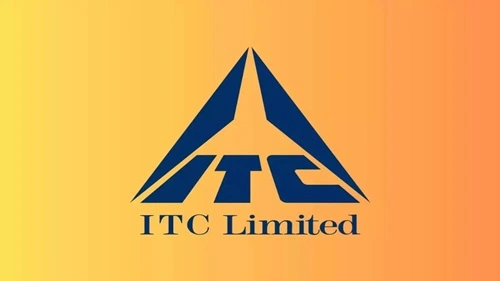Monopolies aren’t always a good thing in a market, but when it comes to investing in monopoly stocks, well, you can expect some really good results down the line. How? Well, since they’re practically the ones controlling the market at that point, it sure is pretty certain that they’ll be making the decision to only grow and bring in more profits. Right? That’s how you, as an investor, make money by investing in such stocks. And if that’s precisely what you’re looking for in the Indian market, well, then here we are with the list of the top 10 leading monopoly stocks in India. Alright, here we go then.
1. Coal India

Are you aware of the fact that India’s coal-producing giant aka Coal India can produce coal more than an entire country’s output? Sure enough, by 2025, it kinda owns 82% of the market share of coal, which is the lifeblood of the energy production scenario right here in India, feeding mostly thermal power plants. Its produced coal is through 318 operational mines of the company across eight states. And if you’re interested in real numbers, well, just know that Coal India reported a net profit of ₹109.6 billion in Q1 FY24, indicating a 4% year-on-year growth.
2. IRCTC

Next on the list, you see, if you happen to buy a train ticket in India, you probably have experienced IRCTC. Nearly a monopoly in online railway ticketing, IRCTC serves more than 10 million passengers a day, and not just that though, it is also involved in the exclusive right of catering and packaged water, Rail Neer, and that’s one of the interesting and mind-boggling facts right there. Just so you know though, it has recorded an astonishing Profit figure of ₹3.1 billion in Q1 FY25, representing an increase of 32.5%.
3. Multi Commodity Exchange of India (MCX)
Then, not just a hub for commodity trading in India, MCX has a big share of 92% of the total market in the country. Sure enough, the range of commodities traded on the exchange extends from gold to crude oil, providing seamless trading for investors. With global ties from the likes of the CME Group entering into collaboration with MCX, the trading exchange saw a bump of 21.3% in total revenue for FY24, with growing trading volumes as the cause, you know?
4. Hindustan Zinc

Ever wondered like where all that zinc for your automobile and appliances gets derived from? Well, Hindustan Zinc indeed owns 78% of India’s zinc market and furthermore comes second in zinc production around the globe, and sure enough, it mostly comes from there. Now you know! This comprises not only zinc but also lead and silver production, and therefore, it is vital for sectors like construction and manufacturing. Additionally, the firm has an incredible return on capital employed (ROCE) ratio of 46.2%, namely, tremendous operational efficiency.
5. Pidilite Industries

Next on the list, yes, we’re pretty certain that every Indian household must have come across this term, Fevicol, once in their lifetime. This is no surprise because the company has a share of about 70% regarding adhesives market-wise under Pidilite Industries. Sure enough, the company, through a positively consolidated product line such as Dr. Fixit and M-Seal, continues to dominate both industrial and consumer segments. Pidilite enjoys itself on a fabulous 29.7% ROCE and has consistently shown growth in FY24, despite being a super popular name, that we can say for sure.
6. Indian Energy Exchange (IEX)

Sure enough, IEX is 98 percent of the market in power trading, literally defining the price discovery of electricity in India. Well, the real-time and longer-term trading-based platform has linked more than 6,300 participants from various sectors, you know? As per the technical and financial details, well, the quarter ended in IEX recording a gain of 27.2 percent profit in Q1 FY25, driven by the high-margin model. With its sight on green energy markets and new product unveiling, IEX remains on kinda the frontline of India’s energy evolution, at least that’s what it seems like.
7. Asian Paints

Would you believe Asian Paints was set up as a tiny business in a garage in Mumbai? And sure enough, today it is the largest paint company in India and the leading entity in decorative coatings. The brand is present in 15 nations but the customer loyalty it enjoys is absolutely unmatched in both urban and rural segments, you know? Right now though, Asian Paints continues to innovate in its products to remain ever profitable and expand globally to ensure its ever-growing, ALWAYS.
8. CAMS (Computer Age Management Services)
It is a no-hidden fact that CAMS is indeed the engine of the Indian mutual fund industry, managing more than 70% of mutual fund assets just so you know. Yes, the millions of investors will then have transactions that do not meet back at CAMS, that makes CAMS a real backbone to the sector, that’s for sure. And it’s currently coming in at nearly 48.4% ROCE. Well, if it is wealth creation that we’re talking about, sure enough, CAMS is right up there doing its best in the mutual funds segment of the market.
9. Praj Industries

Praj Industries may not be a super popular name, but in the second of India’s ethanol plant installations, it commands a scintillating 60%. Indeed, this company operates in an area known as renewable energy solutions that, for the whole of the country, would further the biofuel thrust and energy independence goals, you know? Numbers? Well, in FY24, Praj showed a 43.4% growth in profits due to an increase in global orders.
10. ITC

Last on the list, you see, ITC is very popular in the records of old age, with a 77% market share of India’s cigarette market, you know? However, it is known for the diversification factor into FMCG, hospitality, and agriculture, which is all you can expect from a monopoly stock right here in India, correct? This kinda creates a stronger safety net since the traditional tobacco business stays healthy despite problems while the new companies grow.
Conclusion
Though it is not a pretty sure thing but still, you can still expect to invest in these monopoly stocks and end of the day make some profits down the line since these are only the companies controlling their respective market segment right here in India. Do a little bit of your own due diligence and you’ll be good for the most part.